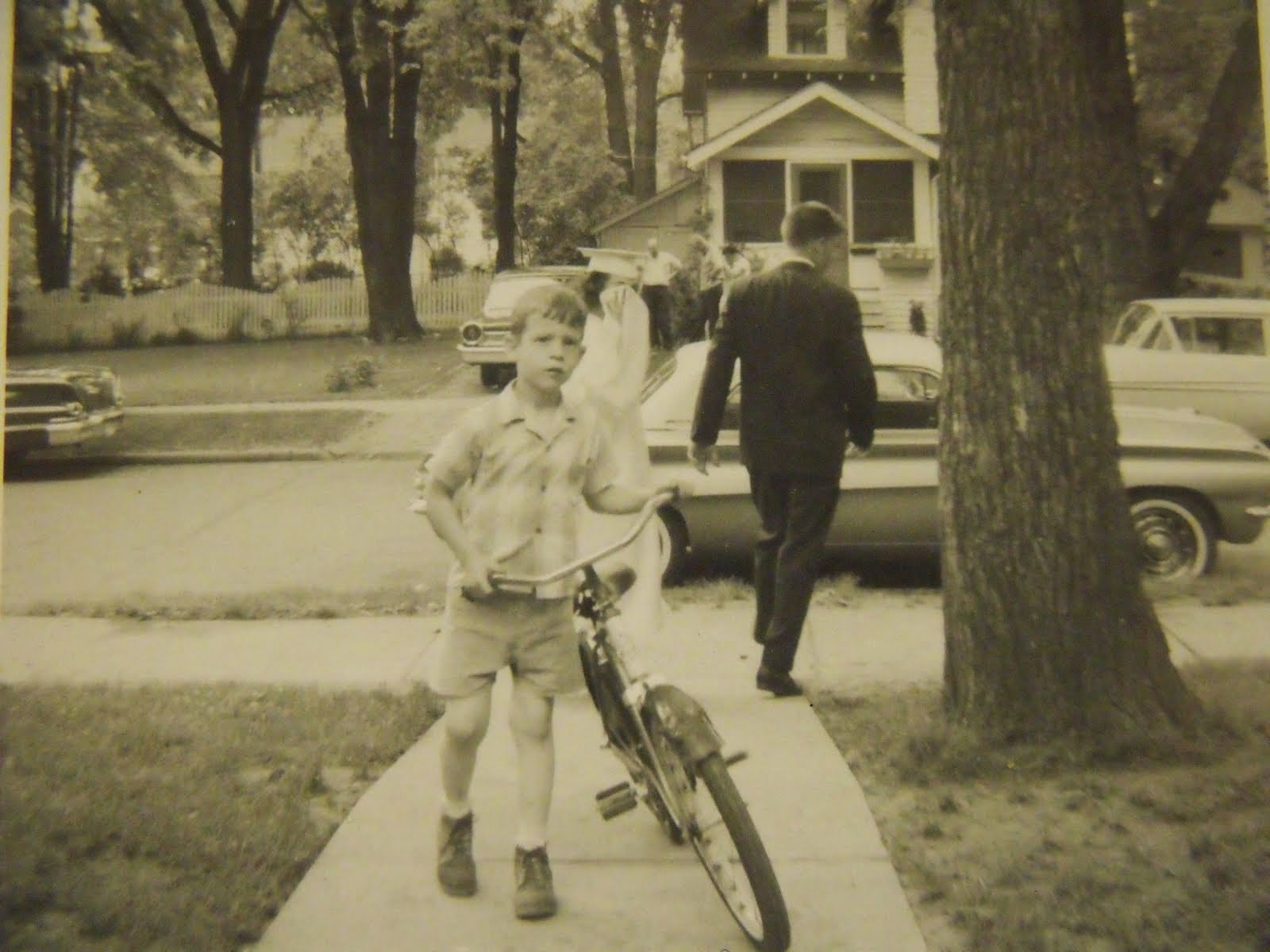Safety Glasses or Goggles must be worn when working with chemicals, grinders, hammers, drills etc. I also strongly recommend wearing surgical gloves when working with any chemicals, cleaners, polishes, rust-removers and de greasers.
Left Click on Image to Enlarge. Back(<)Button to Return
Above: It is not necessary to remove the drive-side cup when servicing the crank/bracket. To position the bracket shell for cleaning, just loosen the clamp on the work-stand and swing the frame in or away from you. Then re-tighten the clamp. The bracket should now be tilted down towards you. You will want to do this with the drive side cup on the far or inside. (see pic above). After you have cleaned it out as good as you can with a rag it is time to spray the inside with Clean-Streak. To avoid making a mess hold a small plastic tub under and behind the bracket. This is to catch the drippings and catch any spray that comes out the other side. You want to do this outside or in a very well ventilated work area. I do this with the exhaust fan on and the overhead doors slightly open. In the summer I do all the spraying of cleaners/de greasers outside whenever possible.
After spraying the inside of the bracket-shell, I jam a clean rag or wad of paper towel inside the bracket. I push it in there real good to make contact with the drive side cup. Then I pinch the rag with needle-nose pliers and twist while pushing in at the same time.
You want to do all this before the cleaner dries up. So it is best to have everything ready in advance. Then remove the rag or paper towel and check the inside with a flash-light and repeat if necessary.
As for the bracket, left side cup and retainer ring. (see above pic) I first wipe off the excess grease then place them in my make-shift parts cleaner for spraying. (see pic below) Kids do NOT use Mom`s pot and strainer as they will then be contaminated (toxic) and no longer safe for cooking. Ever!
Below: This is the original steel three piece crank off the Caliente. The chain-ring guard is in rough shape at the mounting points. Also it is extremely heavy. I decided to replace it with an alloy crank that I scavenged off a parts bike. The replacement crank is nothing special but is considerably lighter and looks to be in good shape.
Above: The replacement crank installed on the freshly cleaned, greased and rebuilt bracket. I did eventually replace the chain with a new Schwinn (derailleur chain) and install new dust caps. The rebuilt bracket is very smooth and the replacement crank looks better and weighs considerably less than the original.
Above: While the original chrome-plated steel stem on the Caliente looked ok. It too was extremely heavy. And the clamp and bolt (on the stem) looked more "Huffy Cruiser" than "Schwinn Road Bike". So I cleaned up this used alloy stem and installed it on the bike.
Above: The brakes are generic "Star" side-pull caliper brakes. On the front brake caliper half of the plastic washer between the two arms was missing. This caused the front or right arm to rub on the back or left arm. Looking through my tray of small brake parts I located a replacement. I had dismantled the caliper for polishing anyway, so replacing it was no big deal. I also noticed the return spring on the caliper would not stay in place on one side. It appeared to be bent, so I tried to straighten it with no success. Digging through my pile of old brakes calipers I found one with a similar spring. I installed it, and it works fine.
Although if you look closely you can see it is a tiny bit too long. "No harm No foul" In other words "good enough". I almost replaced the brake calipers with center-pulls (and I still might) but they are working fine "so for now" I`ll keep them.
Well friends that`s all I have for today. I will be touching up the paint and taking the finish photographs Monday. It will be too cold for paint touch-up before that. With a little luck I should be posting the finish pics Monday or Tuesday. Till then RIDE SAFE and remember to always RESCUE, RESTORE & RECYCLE!
Above: My next project, I am really looking forward this one. Cheers, Hugh
Outdoor Ventures Packable Jacket Review
2 weeks ago






























































